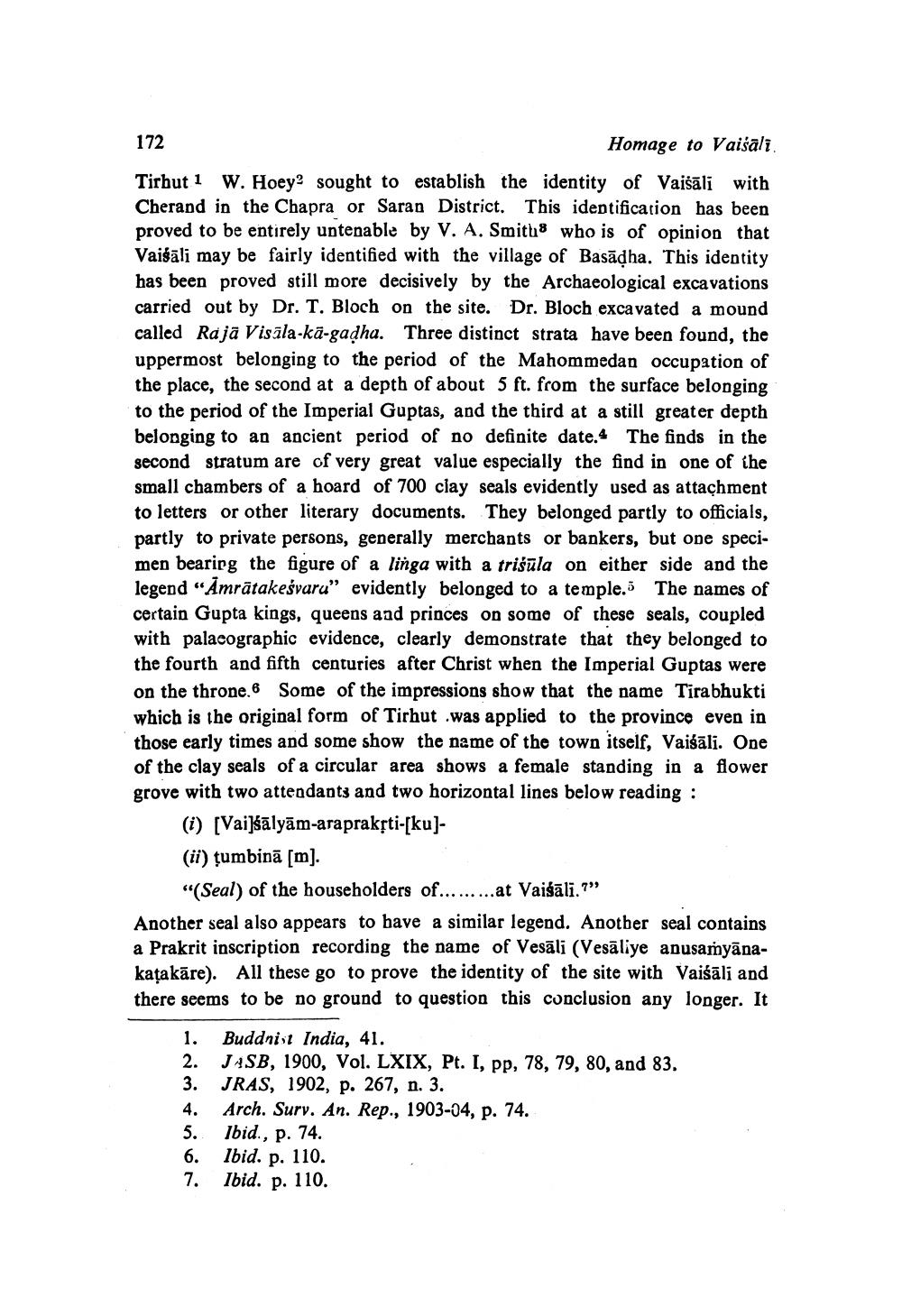________________ 172 Homage to Vaisali. Tirbut 1 W. Hoey? sought to establish the identity of Vaisali with Cherand in the Chapra or Saran District. This identification has been proved to be entirely untenable by V. A. Smith8 who is of opinion that Vaigali may be fairly identified with the village of Basadha. This identity has been proved still more decisively by the Archaeological excavations carried out by Dr. T. Bloch on the site. Dr. Bloch excavated a mound called Raja Visala-ka-gadha. Three distinct strata have been found, the uppermost belonging to the period of the Mahommedan occupation of the place, the second at a depth of about 5 ft. from the surface belonging to the period of the Imperial Guptas, and the third at a still greater depth belonging to an ancient period of no definite date. The finds in the second stratum are of very great value especially the find in one of the small chambers of a hoard of 700 clay seals evidently used as attachment to letters or other literary documents. They belonged partly to officials, partly to private persons, generally merchants or bankers, but one specimen bearing the figure of a linga with a trisula on either side and the legend "Amratakesvaru" evidently belonged to a temple. The names of certain Gupta kings, queens and princes on some of these seals, coupled with palacographic evidence, clearly demonstrate that they belonged to the fourth and fifth centuries after Christ when the Imperial Guptas were on the throne. Some of the impressions show that the name Tirabhukti which is the original form of Tirhut .was applied to the province even in those early times and some show the name of the town itself, Vaisali. One of the clay seals of a circular area shows a female standing in a flower grove with two attendants and two horizontal lines below reading : (i) (Vai]salyam-arapraksti-[ku](ii) tumbina [m]. "*(Seal) of the householders of.........at Vaisali.?" Another seal also appears to have a similar legend. Another seal contains a Prakrit inscription recording the name of Vesali (Vesaliye anusamyanakatakare). All these go to prove the identity of the site with Vaisali and there seems to be no ground to question this conclusion any longer. It 1. Buddnist India, 41. 2. JASB, 1900, Vol. LXIX, Pt. I, pp, 78, 79, 80, and 83. 3. JRAS, 1902, p. 267, n. 3. 4. Arch. Sury. An. Rep., 1903-04, p. 74. 5. Ibid., p. 74. 6. Ibid. p. 110. 7. Ibid. p. 110.




